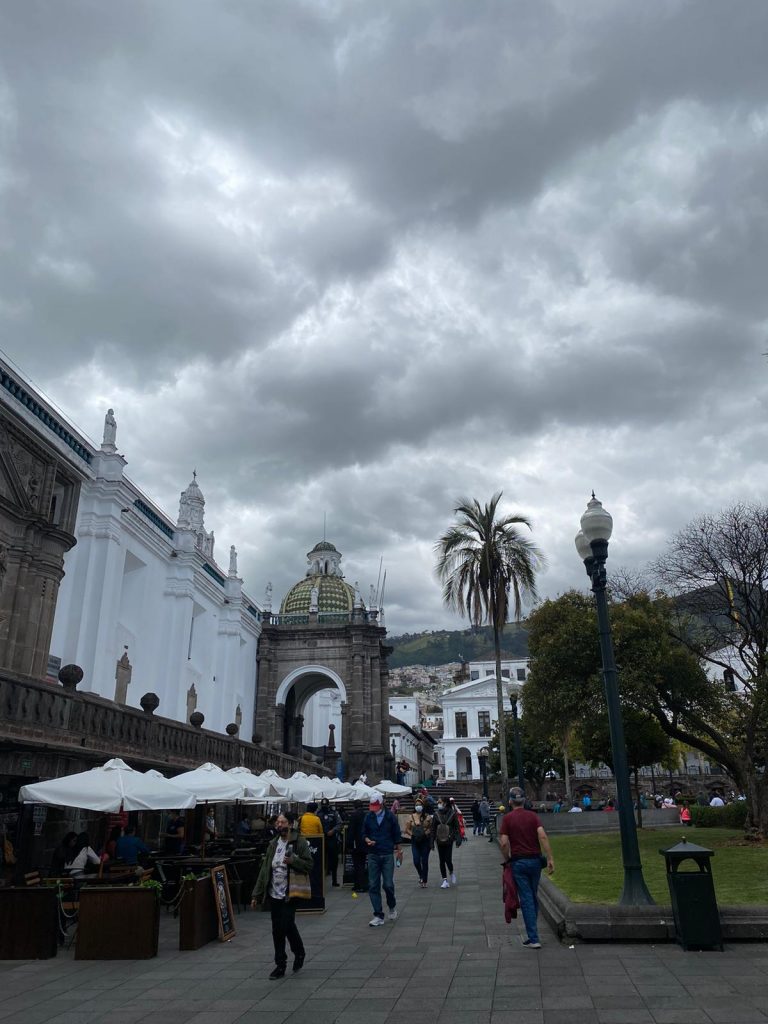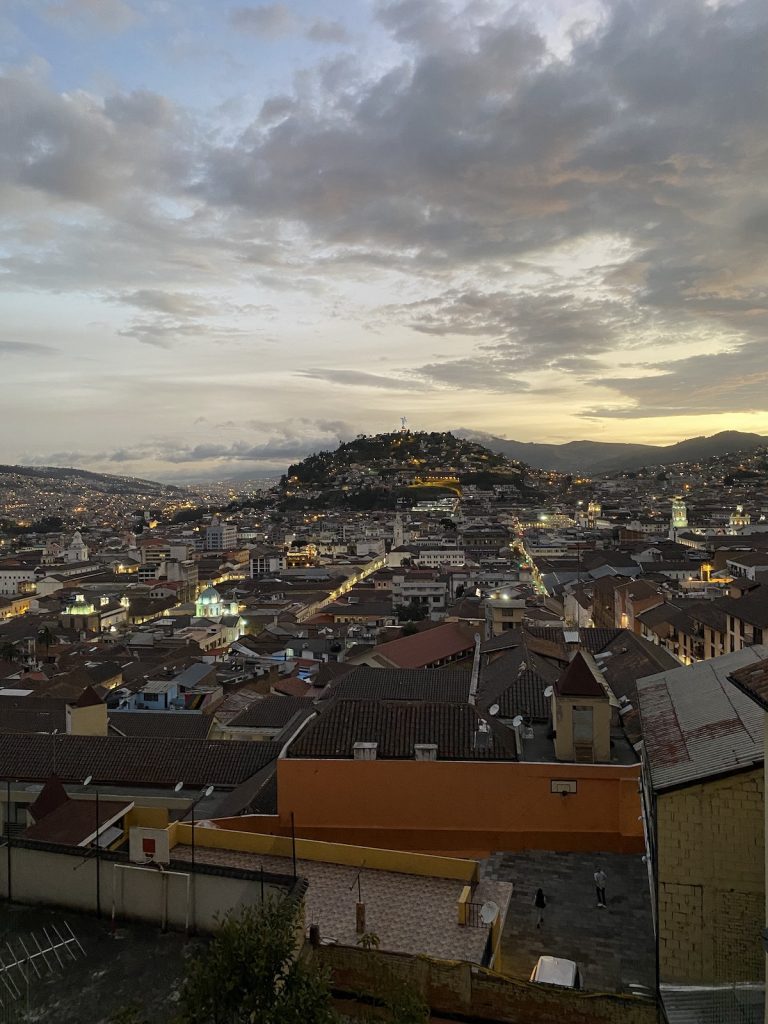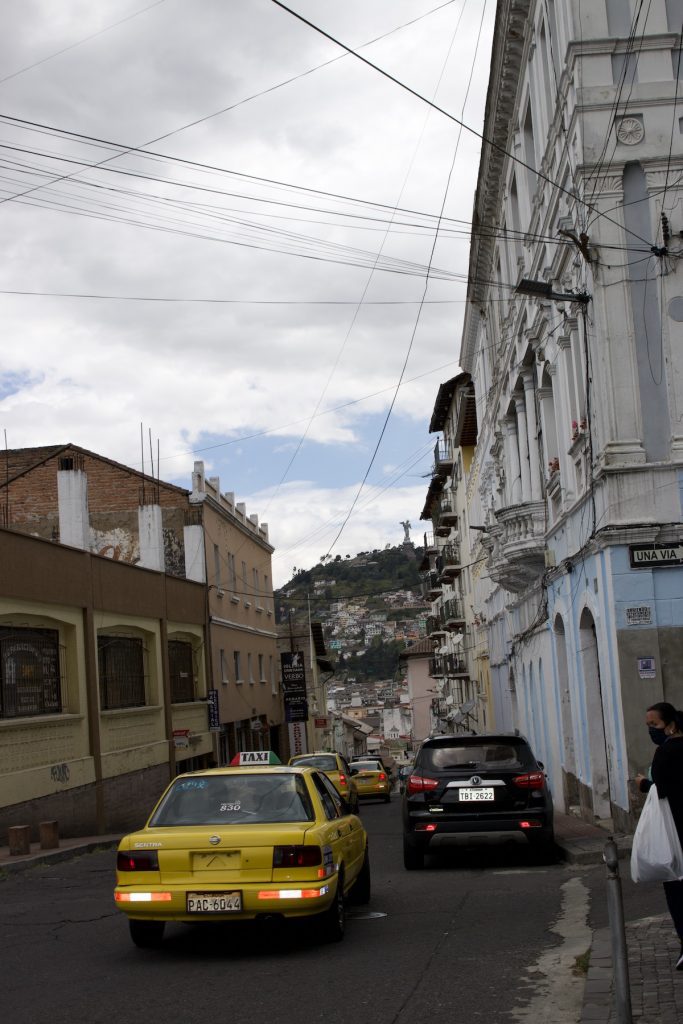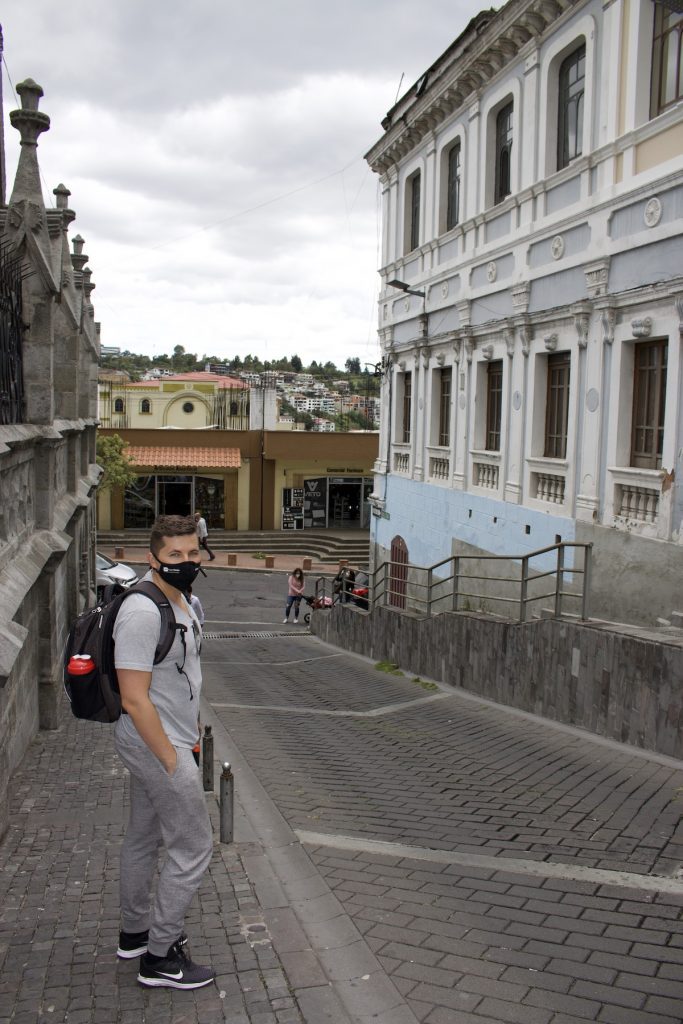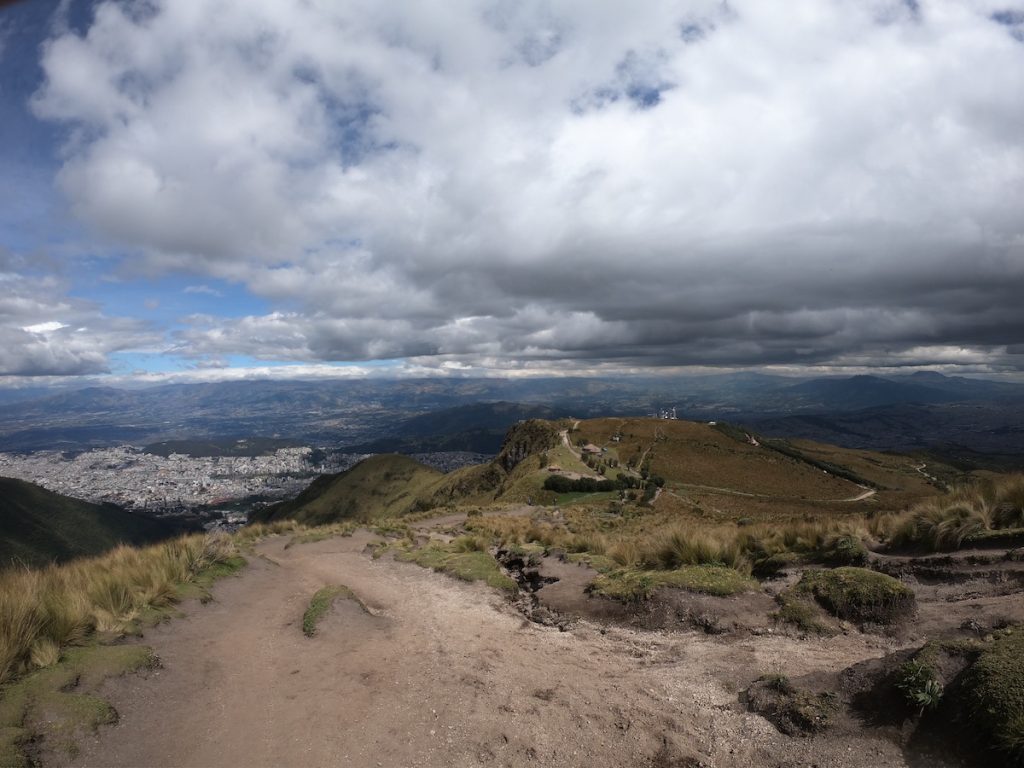This post will cover the essential topic of safety in Quito and outline potential risks that visitors or locals might face in the city. We’ll also share our top safety tips for exploring Quito confidently. During our three-day stay, we took a few precautionary measures and managed to enjoy the city without any issues.
Looking back, exploring Quito safely required local knowledge – from knowing which neighborhoods to avoid to understanding transportation options. Skip the uncertainty I faced and get a FREE personalized Ecuador trip quote from my trusted local experts who know exactly how to ensure a safe and enjoyable visit. Your booking helps support both this blog and local Ecuadorian communities.
Plan perfect trip to Ecuador & Galapagos
I spent countless hours researching everything about traveling to Ecuador, and I created this blog for fellow travel enthusiasts who want the best, most reliable information. But if you want to save time, we’ve partnered with the top local agency to plan your dream trip.
How Safe is Quito?
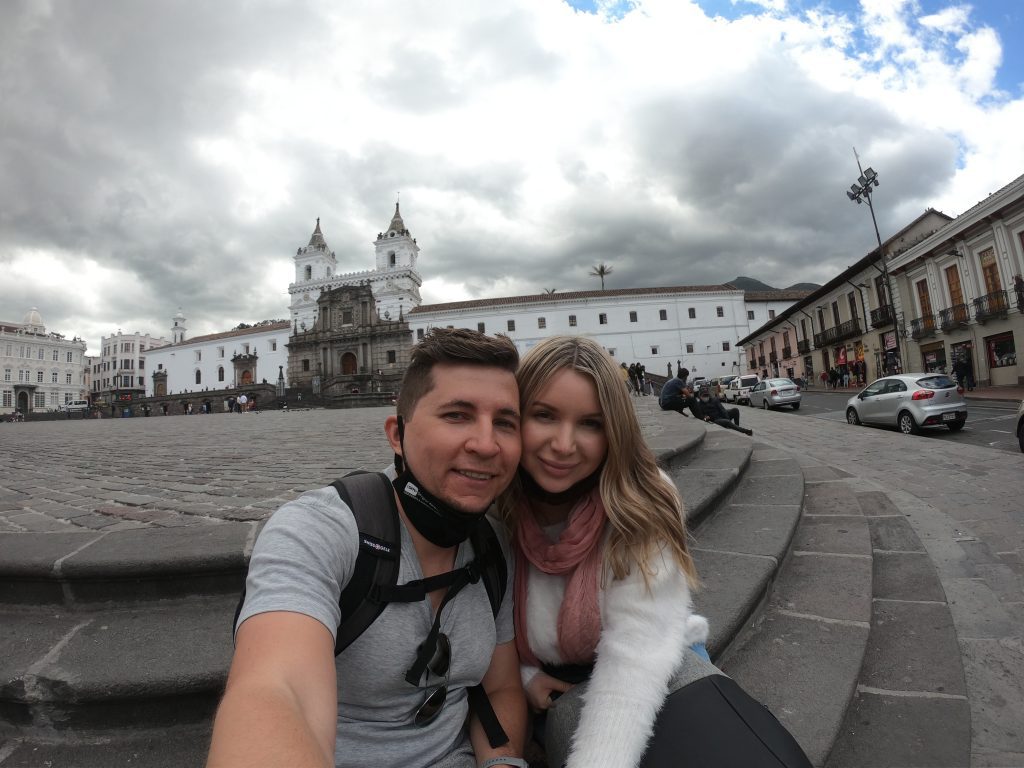
Quito is generally considered as safe as many South American capitals with significant tourism. Still, it’s essential to remain alert and practice common sense, as pickpocketing is prevalent here. Some areas are less welcoming and best avoided, so be cautious about where you go.
The historic center, popular with tourists, is well-policed but should be approached carefully, especially after dark. We stayed in an Airbnb in this area, and we experienced an attempted break-in around 3 a.m., which was unnerving.
Quito offers a solid tourism infrastructure with reliable public transportation. However, it’s worth remembering that incidents like pickpocketing, scams, and even natural events can disrupt an otherwise fantastic visit.
When booking accommodations, research thoroughly and check reviews for insights into neighborhood safety at night. Community forums or Reddit can be great resources for tips and first-hand advice from locals and past visitors.
If safety is a concern or you’re unfamiliar with the language, consider booking a guide. These affordable guides can help you fully experience the city while ensuring a smoother, safer visit.
Is Quito Safe at Night?
Quito, like any major city, feels riskier at night when criminal activity can increase. Walking through quiet neighborhoods after dark is best avoided; opting for certified taxis is a safer choice to steer clear of risky situations.
If you’re planning a night out, try not to wander too far from your accommodations. Safe areas for nighttime walks include La Ronda, Republica de El Salvador, and Plaza Foch. We stayed in the old town but wouldn’t recommend it for accommodations, especially after our late-night experience there.
Be mindful of your belongings; keep your money and phone secure and avoid using them openly on the street. Staying alert and cautious can go a long way in keeping your visit enjoyable and safe.
Ecuador Transportation Safety
Ecuador has an excellent public transportation infrastructure, with buses going dozens of times every day between its major cities.
Are Buses in Quito Safe?
Buses can be a great way to explore natural gems like Baños, Laguna Quilotoa, and more. They’re typically clean, spacious, and affordable. However, it’s wise to be cautious since buses can be hotspots for minor thefts. Keep a close eye on your belongings, and if possible, avoid sleeping unless your items are securely fastened to you.
It’s best to avoid using the overhead racks, as they make it harder to react if someone tries to grab your belongings on their way off the bus. Similarly, placing your bag under the seat in front can put it at risk of being tampered with, so keeping it on your lap, though less comfortable, allows you to stay in control.
Traveling during the day is also a good idea, as sitting near the driver can make you feel safer and less likely to doze off. Plus, you’ll enjoy the beautiful scenery outside.
Lastly, consider spending a bit extra on a direct bus to your destination to avoid switching buses, reducing the risk of losing track of your luggage during transfers.
Are Taxis in Quito Safe?
Cabs in Quito are generally safe, but it’s crucial to avoid unlicensed taxis, which are strongly discouraged in Ecuador. Legitimate taxis are easy to identify—they have either orange license plates or white plates with an orange stripe at the top. Many official taxis are also equipped with video monitoring, which offers extra peace of mind.
For added security, we primarily used Uber. App-based services like Uber, Easy Taxi, and Cabify are widely available in Quito and most Ecuadorian cities, reducing the risk of encountering unlicensed drivers. With pre-payment on your phone, it’s a convenient and secure option.
Is it Safe to Drink Tap Water in Quito?
While tap water in Quito is technically labeled as potable, it’s generally advised that travelers avoid drinking it directly. The city’s water is deemed safe at the source, but due to old piping and outdated infrastructure, it can pick up contaminants before it reaches the tap.
For peace of mind, we stuck to bottled water during our stay in Ecuador. It’s also fine to use tap water for brushing your teeth or cooking. Many locals boil their tap water to ensure it’s safe, as it helps reduce the risk of any stomach issues.
Travel tip: Plastic waste has engulfed the earth and poses a serious threat to marine life. Travel with a filter water bottle to contribute to the cause.
Is Quito Safe For Women and Solo Travelers?
While reports of assaults on women in Quito are relatively few, it’s essential to remember they are not entirely unheard of. Female travelers should stay cautious and stay aware of their surroundings, especially when alone, as they may sometimes draw unwanted attention. If anything feels off, heading to a busy spot or finding a police officer can be helpful.
Have questions about your upcoming Galapagos trip? Join my Galapagos Reddit community and ask other travelers who recently visited the islands. Get up-to-date tips, real experiences, and honest advice from other travelers (I ban tour agencies and resellers).
Unfortunately, the increase in tourism has brought occasional instances of attacks on female tourists, with some cases involving drugging. To stay safe, we recommend sticking to well-lit, busy streets and avoiding detours, especially in less popular areas or at night. This advice applies to all travelers, regardless of gender.
Trust me, while independent exploration is possible, having expert guidance makes all the difference in Quito! Want a worry-free itinerary that lets you experience the city’s highlights safely and confidently? Get a FREE quote from my recommended local agency. Your booking supports this blog and local Ecuadorian businesses.
Travel Safety Tips in Quito
In Quito, look out for the parks ‘La Carolina’ and ‘El Ejido,’ the neighborhoods of ‘La Mariscal,’ ‘La Floresta,’ and ‘La Marin,’ the bus terminals, and the old town, which includes the main plaza and ‘El Panecillo’ hill. If you want to go to El Panecillo hill, you need to take a tour or use a trustworthy mode of transportation.
Pickpockets and bag snatchers are known to operate in prominent tourist places, therefore adhere to the standard precautions of:
- Keep no valuables in your bag.
- Things should not be kept in your back pocket.
- Zip your luggage closed.
- Purchase a money belt.
- When on public transportation, keep your possessions in front of you.
- Wear no pricey jewelry or watches.
- Never take anything from a stranger, and be suspicious of too pleasant strangers.
- Avoid being overly sidetracked when taking photographs or enjoying the sights, especially in busy locations.
- Avoid wandering in dark locations, especially if you’re alone.
- Always request that the taxi driver use the meter! This is the regulation in Ecuador, and the majority of drivers will follow it. Uber accepts payments straight through the app, which is also a viable alternative.
You can also check out my video:
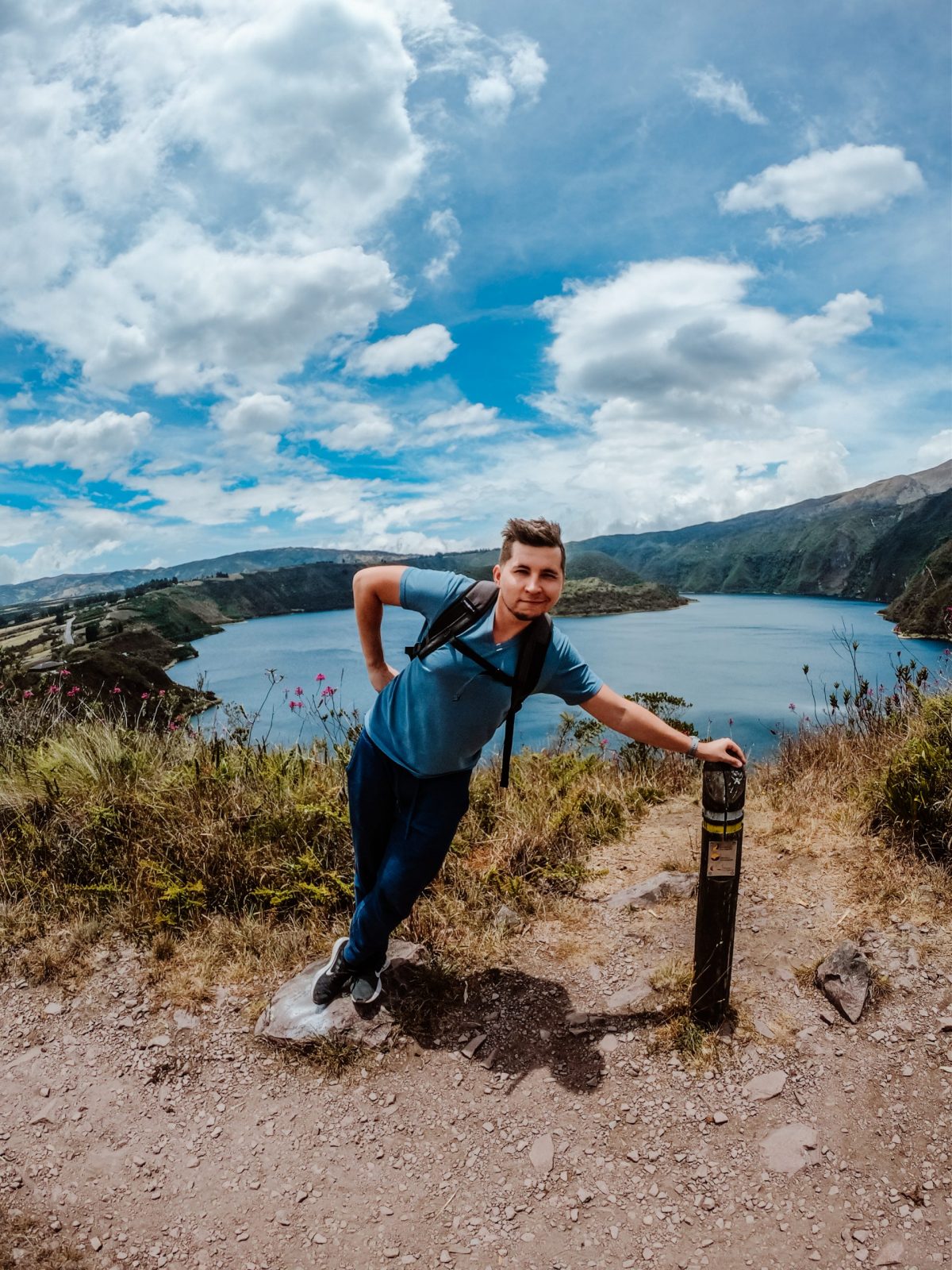
Planning trip to Ecuador?
My wife and I rented a car for 15 days and traveled from the northern part of Ecuador to the south, visiting amazing cities like Quito, Otavalo, Baños, Cuenca, and Guayaquil. Along the way, we explored iconic places such as Cotopaxi National Park, Quilotoa Lake, and many more breathtaking destinations.
Not many blogs cover traveling in Ecuador in detail, so I spent nearly three weeks creating this comprehensive Ecuador travel guide based on our trip. It’s packed with everything you need to know, and honestly, I consider it the best free travel guide about Ecuador out there.
If you’re planning a trip to Ecuador, don’t forget to use my link for discounted hotel prices through Booking.com. It’s a great way to support my blog while saving money on your accommodations!
The Verdict
Ecuador is indeed a safe travel destination and one of the most biodiverse countries in South America, making it an essential place to explore. Its stunning landscapes and natural diversity alone are enough to capture any traveler’s attention.
Following basic personal safety rules is always a wise approach. Awareness is key—staying alert to petty crime, potential natural hazards, and your surroundings should help ensure a safe and enjoyable experience throughout your trip.
Once again, if you are concerned about safety, just get one of these reasonably priced tours:
If you are considering a vacation to Ecuador to see the history and culture of Quito or the natural marvels of the Galapagos Islands, we hope this article has been of use in organizing your trip.
Plan perfect trip to Ecuador & Galapagos
I spent countless hours researching everything about traveling to Ecuador, and I created this blog for fellow travel enthusiasts who want the best, most reliable information. But if you want to save time, we’ve partnered with the top local agency to plan your dream trip.

